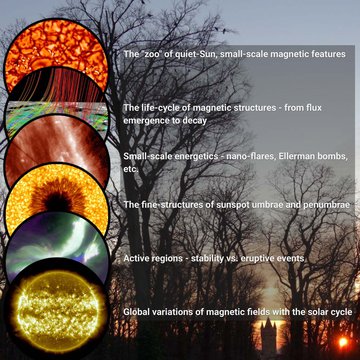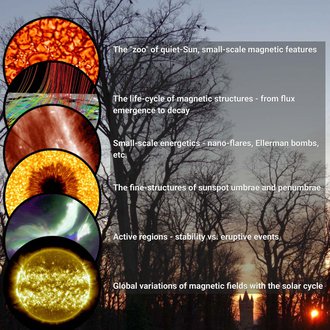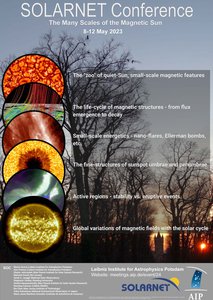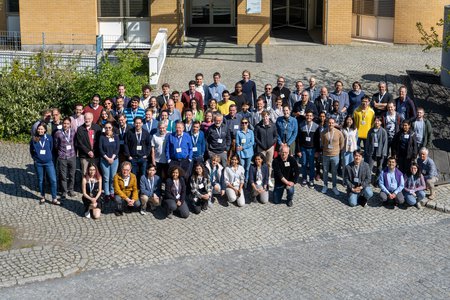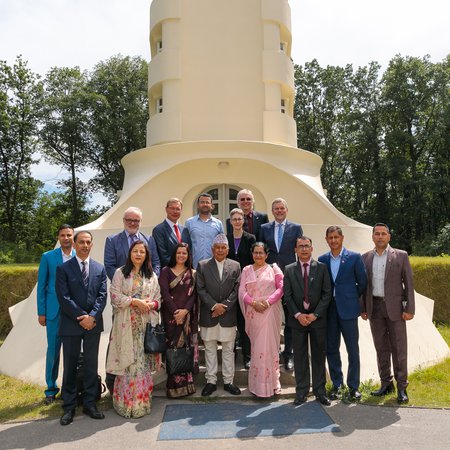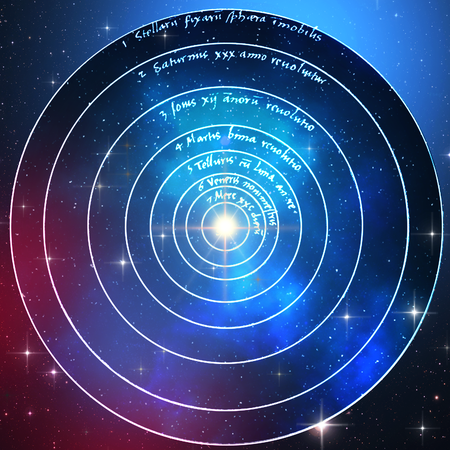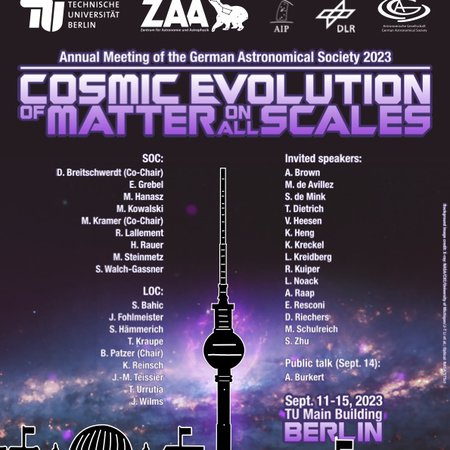The Many Scales of the Magnetic Sun
More than 100 scientists meet from 8 to 12 May in Potsdam for the SOLARNET II Conference: “The Many Scales of the Magnetic Sun”. The goal of this conference is to collectively review the advancement in the understanding of solar magnetic fields starting from the fundamental structure size of magnetic fields to global properties of active regions and the Sun as a whole.
To arrive at a cohesive picture of the magnetic Sun, the meeting is organized according to specific scientific topics and questions, fostering discussions among observers, instrument builders, hosts of data holdings, and theoreticians. Most of the participants attend the conference in person at Potsdam’s Telegrafenberg, yet some 20 participants are joining virtually.
Dr. Meetu Verma, chair of the scientific organizing committee, is looking forward to meeting colleagues in person: “This conference was planned for 2021 but because of the corona pandemic it was pushed to a later date. Now finally we are able to host colleagues in such big numbers.” She is also excited to hear new scientific results: “As every other branch of astronomy, solar physics research is guided by the advancement in observations and modelling. I am particularly interested in the new results from latest facilities such as the 4-metre Daniel K. Inouye Solar Telescope (DKIST) and plans for the upcoming 4-metre European Solar Telescope (EST).”
Professor Carsten Denker, chair of the local organizing committee and head of the Solar Physics section at AIP, adds: “We are very pleased that many young researchers will attend the meeting, implying that the solar physics community is thriving”. Furthermore, he continues: “We are looking forward to lively discussions and future collaborations”. The organizers thank the EU Horizon 2020 SOLARNET project for funding to plan and organize the conference. New results presented at the meeting will be published in a topical issue of the peer-reviewed Solar Physics journal.
SOLARNET is a European network coordinating and promoting research infrastructures in the field of high-resolution solar physics. The project aims at supporting network activities, joint research projects and integrating the major European infrastructures of solar physics.

Group photo of the participants of the SOLARNET conference.
More than 100 scientists meet from 8 to 12 May in Potsdam for the SOLARNET II Conference: “The Many Scales of the Magnetic Sun”. The goal of this conference is to collectively review the advancement in the understanding of solar magnetic fields starting from the fundamental structure size of magnetic fields to global properties of active regions and the Sun as a whole.
To arrive at a cohesive picture of the magnetic Sun, the meeting is organized according to specific scientific topics and questions, fostering discussions among observers, instrument builders, hosts of data holdings, and theoreticians. Most of the participants attend the conference in person at Potsdam’s Telegrafenberg, yet some 20 participants are joining virtually.
Dr. Meetu Verma, chair of the scientific organizing committee, is looking forward to meeting colleagues in person: “This conference was planned for 2021 but because of the corona pandemic it was pushed to a later date. Now finally we are able to host colleagues in such big numbers.” She is also excited to hear new scientific results: “As every other branch of astronomy, solar physics research is guided by the advancement in observations and modelling. I am particularly interested in the new results from latest facilities such as the 4-metre Daniel K. Inouye Solar Telescope (DKIST) and plans for the upcoming 4-metre European Solar Telescope (EST).”
Professor Carsten Denker, chair of the local organizing committee and head of the Solar Physics section at AIP, adds: “We are very pleased that many young researchers will attend the meeting, implying that the solar physics community is thriving”. Furthermore, he continues: “We are looking forward to lively discussions and future collaborations”. The organizers thank the EU Horizon 2020 SOLARNET project for funding to plan and organize the conference. New results presented at the meeting will be published in a topical issue of the peer-reviewed Solar Physics journal.
SOLARNET is a European network coordinating and promoting research infrastructures in the field of high-resolution solar physics. The project aims at supporting network activities, joint research projects and integrating the major European infrastructures of solar physics.

Group photo of the participants of the SOLARNET conference.
Images
Poster of the SOLARNET conference with its six key topics of solar research.
Big screen size [1000 x 1404, 300 KB]
Original size [7342 x 10311, 3.5 MB]
Group photo of the participants of the SOLARNET conference.
Big screen size [1000 x 666, 230 KB]
Original size [3000 x 2000, 1.7 MB]
